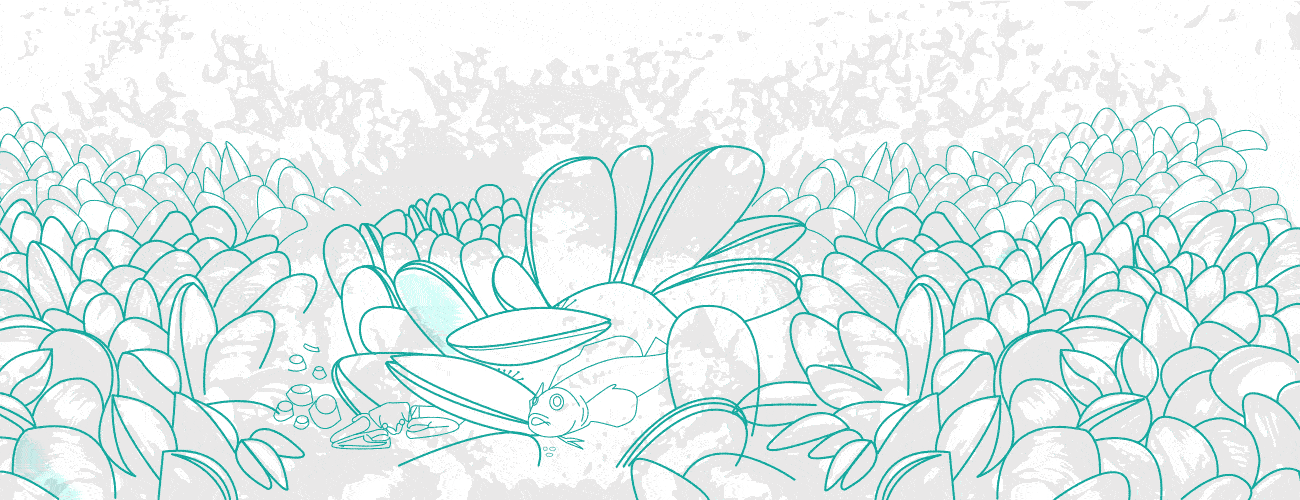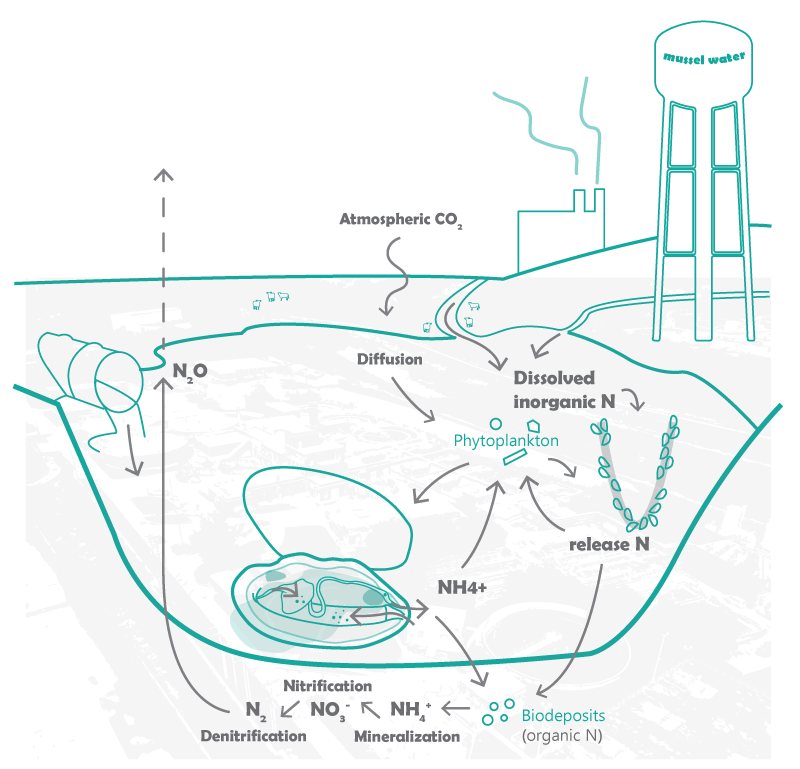Mussels Matter: Exploring Restoration Design for Freshwater Mussels
Harisa Martinos, evolveEA Fellow, is working on many design projects, while conducting research on mussels: a tiny, yet powerful driver of environmental remediation.
What Makes Freshwater Mussels so Special?
What does it mean for a design problem when those being affected are not just people, yet, a tiny, important aquatic species that lives at the bottom of our fresh bodies of water? In the past year, I continually asked myself this question during my fellowship at evolveEA, where, on top of assisting with the office’s architectural and urban planning projects, I researched topics related to ecological restoration, infrastructure, habitats, and their connections to the urban landscape. This investigation period led me to focus my fellowship research on how freshwater mussel populations can be restored with structures that provide both public space and natural infrastructure.
When thinking about ecological assets, the freshwater mussel should be at the forefront of the discussion. Mussels, whether they are freshwater or marine, are essential to our aquatic environments. They are our waters’ environmental warriors and serve as water-treatment plants and food pantries. Freshwater mussels filter bacteria, pathogens, and algae out of the water, cleaning our polluted waterways, while also helping other aquatic species receive proper sunlight and food. They are also an environmental indicator species, so when their populations slowly decline, so do other aquatic species populations, helping us decode the dynamics of their complex, disturbed environments. Naturally, they live together in groups, creating habitats which are biodiversity hotspots. Restoring their habitats in our watersheds offers reciprocal benefits. When we help mussels flourish by restoring both their populations and the habitats that they typically reside in, we get cleaner watersheds, greater biodiversity, and healthier ecosystems. For more information on freshwater mussels, a great resource is the mighty mussel website.
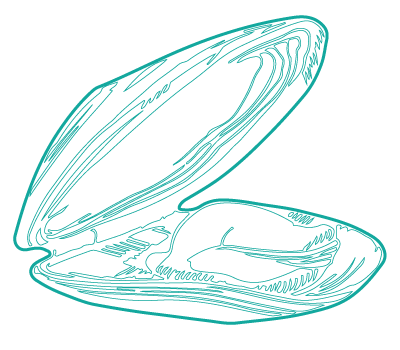

Helping Mussels get Back on Their Feet
These qualities have made freshwater mussels an interesting point of intersection between science and design. Farmers have learned ways to propagate marine mussels to sustainably source them for food using heated tanks that grow mussel seed that is later taken to rafts with lines made out of artificial seaweed, fuzzy polypropylene rope, or even plastic mesh socks where mussel larvae latch onto and grow.
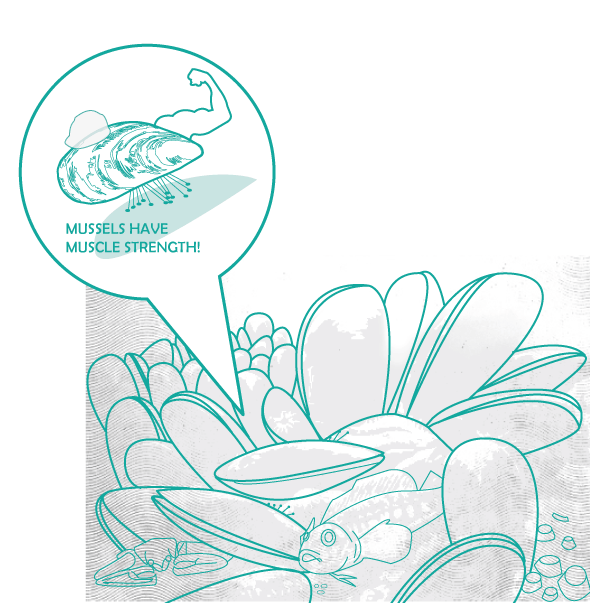
Scientists adapted these methods to study the best environmental factors and structures that support freshwater mussels species’ overall health and mortality. Over the summer, I had the opportunity to visit a small-scale freshwater mussel hatchery located in Philadelphia at the Fairmount Water Works as part of the Partnership for the Delaware Estuary’s Mussels for Clean Water Initiative. There I learned that a big step in the restoration process happens outside of the water in labs where scientists simulate the breeding process by extracting glochidia (microscopic mussel larvae) from adult mussels and introducing them to host fish where they will attach to the fish’s gills to grow into juveniles. Within the hatchery, a series of equipment such as “mucket buckets” enables them to grow before they are later put in other supportive structures in nearby freshwater ponds and rivers. The mussels from this particular hatchery were placed in Barnhart buckets and similar structures at the Discovery Center, where they slowly grew to an optimal size and relocated into more ‘wild’ waters where their beds get rebuilt. What makes this process particularly special is that the mussels filter the water throughout each stage and volunteers can help take measurements and learn about their watersheds throughout the restoration process.
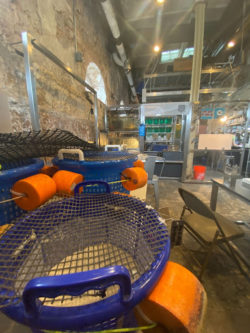
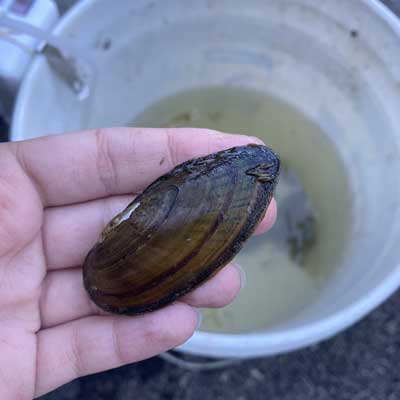
Designers, specifically landscape architects, are an important group of professionals and researchers grappling with how to restore healthy water ecologies in our regional watersheds. Mussels are a key part of our watersheds and provide natural infrastructure that protects and improves both aquatic and inland communities. Inspired by scientists’ living experiments and aquaculture, designers have envisioned natural infrastructure for coastal cities where visitors can engage the restored populations of mussels in resilient and beautiful natural spaces. Oyster-tecture is a designed oyster reef that aims to slow wave energy and filter water while also providing habitat and recreational opportunities in Brooklyn, New York, using reef islands and other “scaffolding” style structures. A section of the Wild Mile in Lincoln Park off of the Chicago River is an urban sanctuary and educational space that hosts mussels. Similar projects that have potential to include mussel restoration are ones that are already focused on aquatic habitat structures such as the Chicago River’s Fish Hotel as part of the Chicago Riverwalk and the Cleveland Harbor Eastern Embayment Resilience Study.
While not explicitly about bivalves, some of evolveEA’s water-focused projects address the ecology and health of freshwater sources and could possibly become implementation projects. The Riverlife Completing the Loop plan for Pittsburgh’s riverfronts and the Buffalo Rain Check 2.0 plan for green infrastructure implementation both address downstream receiving waters where mussels can be present.
Mussels in Our Region
While a mussel’s superpower is its filter-feeding, heavy pollution in our freshwaters is also a major setback for their survival. According to the Ohio River Foundation, the Ohio River basin is home to almost half native freshwater mussel species, with at least 11 extinct and 46 classified as endangered or of concern. Since freshwater mussels are endangered species, the Pennsylvania Fish and Boat Commission requires that a survey must be conducted on a site before planned development. Shockingly, it is no longer common to find surviving and healthy freshwater mussels, let alone mussel colonies in our rivers today. Historically, freshwater mussels have gone through periods where they have been close to being endangered due to human extraction for the pearl industry. Now, many are imperiled due to various factors such as habitat loss, water pollution, dams, erosion, channelization, commercial harvesting, the lack of host fish needed for reproduction and invasives like Zebra Mussels. Research is still very limited and we are still trying to fully understand what is causing these mass extinctions as well as ways to restore mussel populations successfully.
Through my research, I believe that designers should embrace an expanded role in aquatic wildlife restoration to link our natural and built environments, benefitting multiple species and better connecting people to their natural environments. Designers should know the life cycles and species interactions as well as the environmental conditions that support their survival. Development and activity that occurs by the water should consider the aquatic species of focus as a client–their cohabitors as stakeholders.


